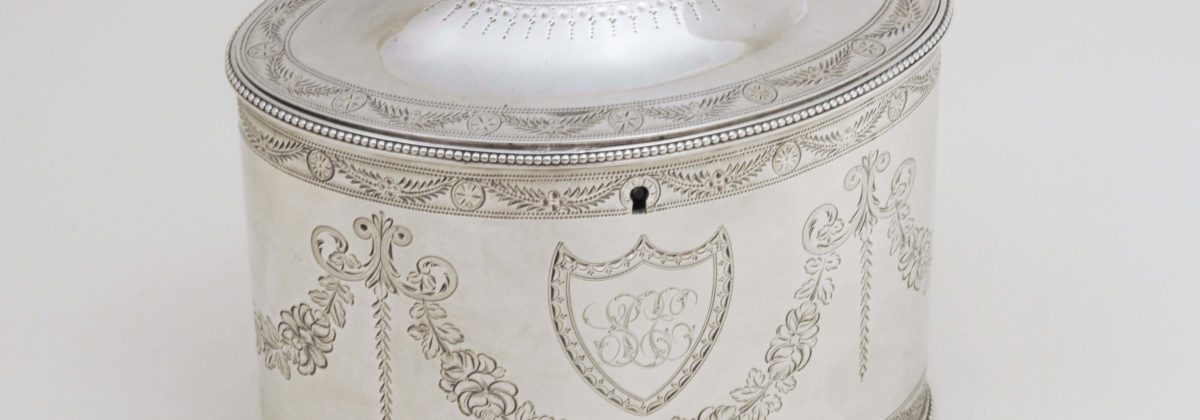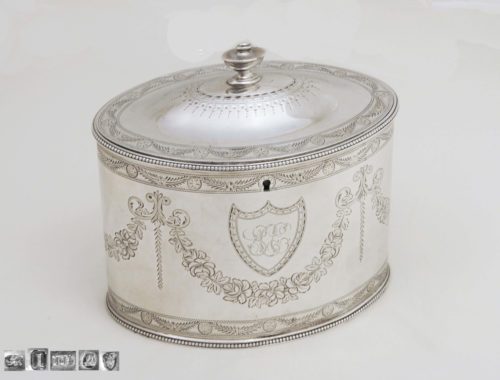Object number #455
London 1786/7
Maker: John Harris II
City’s hallmark: crowned lion’s head for London (Jackson 1921: 91)
Maker’s mark: “IH” in an orthogonal shield for John Harris II (Grimwade 1990, nr. 1375).
Assay mark: Lion passant (Jackson 1921: 91)
Date letter: “l” for 1786/7 (Jackson 1921: 91)
Duty mark: King’s head (Jackson 1921: 91)
Height: 14,2 cm (5,6 in.); Length: 14,5 cm (5,7 in.); weight: ca. 394 gr. (13,9 oz.)
Detailed description
George III Tea Caddy, Silver
This tea caddy is a typical silver object of the last quarter of the 18th century. The body has an oval shape and is very fine and detailed engraved with flowers and garlands. At the upper and lower edge of the body, there is a beautifully worked out flower engraving and a fine pearl frieze. On the front and inside of a shield there is a monogram or owner engraving. The slightly arched hinged lid is also finely engraved with naturalistic engraving. The crowning of the lid is a cast, vase-shaped knob. In the middle at the front, above the coat of arms a lock insert (the lock itself is attached to the inner wall).
Tea in Europe
Tea had established itself in Europe in the 17th century, around 1680. The great supporters of this hot drink were first the statesmen and noblemen of the court as well as doctors. Since the beginning of tea consumption in Europe, a British tea culture has developed, which is strongly connected with the import of tea from China (trade monopoly of the East India Company). Queen Anne contributed to the popularity of the hot beverage because she preferred it for breakfast instead of warm beer. The price of tea was always relatively high. It was traditionally consumed with lots of sugar, another 18th century “treasure”.
The need to store the tea in a dark and dry container to retain its aroma led to the development of the closed tea caddy. The tea caddies were often made as a pair in England to store the green and black teas separately.
Tea drinking was considered a ceremonial at the beginning of the 18th century: the lady of the house prepared the tea herself in front of the guests. Therefore, the silver tea equipment played an important ceremonial role.
Maker
John Harris II registered his first stamp in 1761 and his second in 1765. Later in his career, he was active as a watch case maker.
Literatur
Gruber, Al., 1982, Gebrauchssilber des 16. bis 19. Jahrhunderts, Würzburg: Edition Popp.
Grimwade, Ar., London Goldsmiths 1697-1837. Their marks and lives from the original registers at Goldsmiths’ Hall and other sources, GB: Faber and Faber, 1990 [Grimwade3].
Jackson, Ch., J., English Goldsmiths and their marks, London: MacMillan and Co. Limited, 1921.



